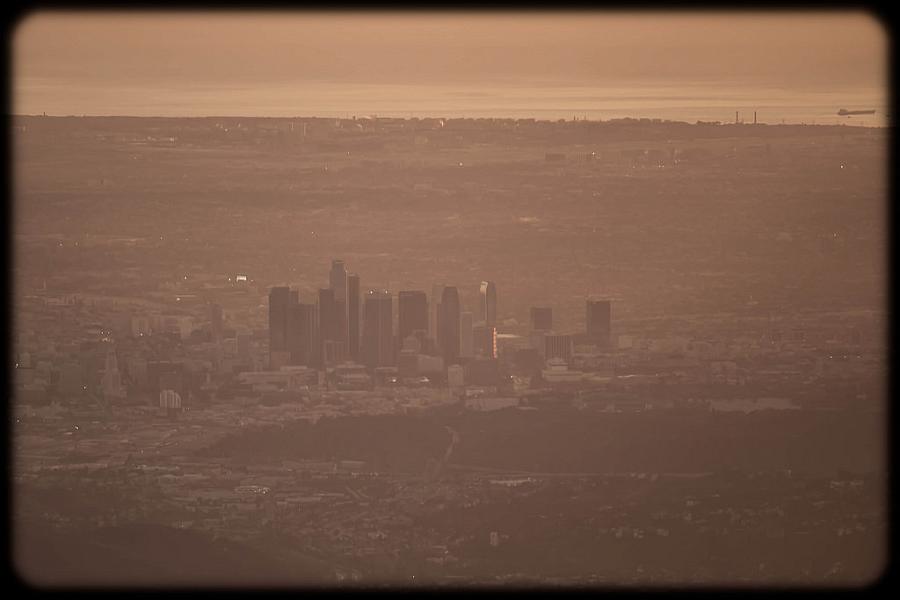California kids gain from cleaner air — yet it’s still the most polluted in the country

Air pollution in California's Southland: Still bad, but much better than it was.
California has the worst air in the nation. Yet in the Los Angeles region, epicenter of some of the country’s foulest air, kids are now breathing easier.
Wait, what? Let’s step back and unpack the slightly confusing news from the past two weeks.
On Wednesday, news outlets reported on the American Lung Association’s 2016 State of the Air report card, in which California cities occupy the top four spots for worst air pollution in each of the report’s categories. The Los Angeles-Long Beach area had the most high ozone days, while Central Valley cities such as Bakersfield, Fresno and Visalia led the country in particle pollution.
On the surface, that might seem to contradict news headlines from the previous week about a new USC study that reported major improvements in children’s respiratory conditions in Southern California.
The study, the latest to come out of the massive California Children’s Health Study, looked at the prevalence of bronchial symptoms in 4,602 children in three cohorts from eight Southern California communities from 1993 to 2012.
David Danelski of The Press-Enterprise in Riverside, who has reported extensively on the health risks of the Southland’s air pollution, detailed the study’s results:
During those two decades, diesel and smoke soot and other kinds of fine-particle pollution dropped by nearly half as cleaner vehicles came onto the roads and regulatory agencies cracked down on smokestack and other pollution sources, from leaf blowers to nail polish. And children appeared to benefit. By 2012, asthmatic children were 32 percent less likely to have these respiratory symptoms compared with the children tracked in the early and mid-1990s, the USC group found.
If you’re wondering how the study proved that these improvements in children’s respiratory health were actually caused by lower levels of air pollution, it didn’t. It’s an association. “Although the study design does not establish causality, the findings support potential benefit of air pollution reduction on asthma control.”
That doesn’t mean it’s a spurious correlation, but it does mean that this study wasn’t the kind of controlled experiment that can establish causation. (For some helpful guidance on how not to be cowed by such issues of causation vs. correlation in your reporting, see Bill Heisel’s excellent recent post on this topic).
So air quality is actually considerably improved in many parts of Southern California and the Central Valley. Bakersfield may get an “F” from the American Lung Association, but it does have 73 fewer high ozone days this year compared with 1996. Los Angeles-Long Beach actually has 96 fewer days a year in which 24-hour particle pollution exceeded recommended levels, and the number is dropping fast.
Issuing an annual report card is a reliable way for advocacy organizations to garner media coverage and continue the drumbeat for cleaner air. Clearly, advocates fear that any sense of complacency will forestall further improvements. And to be fair, progress on air pollution isn’t a foregone conclusion. But the emphasis on the negative can obscure real gains in air quality. That doesn’t mean the association’s conclusions are wrong.
The South Coast Air Quality Management District, the agency that regulates stationary sources of air pollution in Orange, Los Angeles, Riverside and San Bernardino counties, has come under fire recently after it fired its longtime executive, sided with local industry in rejecting more stringent pollution caps and then hired an industry consultant as its new executive on April 1. Tony Barboza covered the drama for the Los Angeles Times:
Protesters sharply criticized recent decisions by the board and what they say has been a shift in priorities since Republicans gained a majority on the air quality board this year and vowed to make pollution regulations easier on businesses.
It remains to be seen how the board’s shifting makeup and more business-friendly stance will influence the new clean air plan later this year. That plan must spell out how the region plans to meet federal guidelines for ozone and particulate pollution.
As the USC study suggests, improved air quality has translated into real gains in children’s health in recent decades. Particularly for poorer kids who are far more likely to in homes near freeways, ports and refineries, it would be a shame if current air pollution levels plateaued thanks to a “good enough” outlook.
[Photo by Carodean Road Designs via Flickr.]

